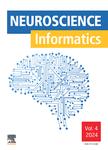版权所有:内蒙古大学图书馆 技术提供:维普资讯• 智图
内蒙古自治区呼和浩特市赛罕区大学西街235号 邮编: 010021

作者机构:Convergence Department Korea University of Technology and Education Cheonan South Korea Growth Analytics EviCore by Evernorth The Cigna Group Franklin TN United States School of Computer Science and Engineering Galgotias University Uttar Pradesh Greater Noida India CVR College of Engineering Hyderabad India Dr. D. Y. Patil Vidyapeeth Pune Dr. D. Y. Patil School of Science & Technology Tathawade Pune India Division of Research and Development Lovely Professional University Phagwara India Department Of Computer Science SSD Women's Institute of Technology Bathinda India
出 版 物:《Neuroscience Informatics》 (Neurosci. Inform.)
年 卷 期:2025年第5卷第1期
页 面:100186-100186页
主 题:Brain stimulation EEG signal Genetic algorithm PSO SVM
摘 要:Background: Manual visual inspection and analysis of electroencephalogram (EEG) signals of patients are susceptible to the subjective influence of doctors. The introduction of GA-PSO improved the categorization accuracy of both the EP (Evoked potential) and normal groups by automatically screening and optimizing the best feature combination of brain networks. Therefore, selecting effective EEG features for automatic recognition of EP is particularly important for Neuroscience. New method: A phase synchronization index (PSI) brain stimulation is constructed from multi-channel EEG signals, extracting 15 topological features from the perspectives of network nodes and structural functions. In order to optimize and screen feature combinations in both single and cross-frequency bands, the GA-PSO algorithm is utilized as a feature selection tool for choosing epileptic EEG network features. Result: Feature combinations are made both within and between bands, and the optimal feature mix is found using the PSO and GA-PSO algorithms. The study found that the GA-PSO algorithm outperformed the PSO algorithm, achieving a higher EP recognition accuracy of 0.9335 under cross-frequency band conditions. Comparison with existing methods: The results indicate that the introduction of the genetic algorithm enables the GA-PSO algorithm to maintain population diversity and avoid premature convergence to local optima, thereby enhancing the search capabilities of the population. Conclusion: Based on the findings, topological aspects provide a good way to describe the anomalies in the brain networks of epileptic patients and enhance the classification accuracy through combination, which provides help for pathological research and clinical diagnosis of epilepsy. © 2025 The Author(s)